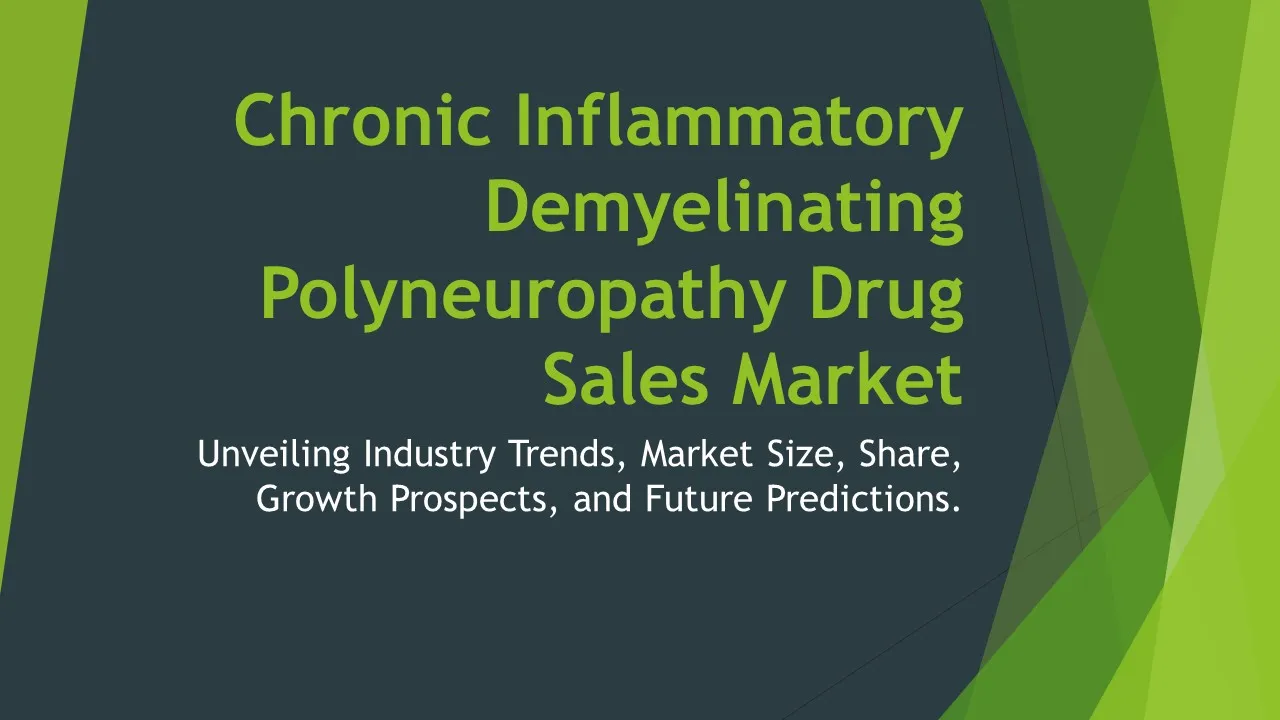Generic Oncology Sterile Injectable
Oncology Sterile Injectable Market Segments - by Product Type (Monoclonal Antibodies, Cytotoxic Agents, Immunomodulators, Hormonal Agents, and Others), Application (Hospitals, Clinics, Ambulatory Surgical Centers, and Others), Distribution Channel (Hospital Pharmacies, Retail Pharmacies, Online Pharmacies, and Others), Ingredient Type (Docetaxel, Paclitaxel, Cisplatin, Doxorubicin, and Others), and Region (North America, Europe, Asia Pacific, Latin America, Middle East & Africa) - Global Industry Analysis, Growth, Share, Size, Trends, and Forecast 2025-2035
- Report Preview
- Table Of Content
- Segments
- Methodology
Generic Oncology Sterile Injectable Market Outlook
The global oncology sterile injectable market was valued at approximately USD 60 billion in 2022 and is projected to reach around USD 120 billion by 2035, growing at a CAGR of 10.5% during the forecast period. This substantial growth is primarily driven by the rising prevalence of cancer, increasing demand for effective treatment options, and advancements in drug delivery systems. The efforts towards developing targeted therapies and personalized medicine are further fueling the market's expansion. Additionally, an increasing number of clinical trials focusing on innovative sterile injectable formulations are contributing to the overall growth of the industry. The growing geriatric population, more prone to various cancers, also significantly increases market demand.
Growth Factor of the Market
The oncology sterile injectable market is experiencing dynamic growth driven by multiple factors. One of the foremost drivers is the increasing incidence of cancer worldwide, which has necessitated the development of more effective treatment modalities, including injectable therapies. Moreover, advancements in biotechnology and pharmaceutical research have enabled the creation of novel drugs that specifically target cancer cells, thereby enhancing treatment efficacy and patient outcomes. The rise in healthcare expenditure, particularly in emerging economies, is leading to greater accessibility and availability of these treatments. Additionally, the growing trend of outpatient treatments and the shift from hospital-based care to home healthcare for cancer patients are influencing market dynamics. The continuous innovations in formulation technologies, including nanotechnology-based injectables, are also playing a pivotal role in market growth.
Key Highlights of the Market
- The oncology sterile injectable market is expected to grow at a CAGR of 10.5% from 2025 to 2035.
- Monoclonal antibodies are projected to dominate the product type segment due to their specificity in targeting cancer cells.
- The hospital application segment is anticipated to hold the largest share, driven by increased inpatient treatments.
- North America is expected to account for the highest market share, attributed to advanced healthcare infrastructure and high cancer prevalence.
- Online pharmacies are witnessing rapid growth as a distribution channel, catering to the convenience of patients for medication procurement.
By Product Type
Monoclonal Antibodies:
Monoclonal antibodies are a significant segment within the oncology sterile injectable market, known for their targeted mechanism of action against specific cancer antigens. This specificity enables them to minimize damage to healthy cells while effectively attacking tumor cells, making them a preferred choice in cancer therapy. The adoption of monoclonal antibodies has surged due to their efficacy in treating various malignancies, including breast, lung, and colorectal cancers. Additionally, the development of biosimilars has further expanded their availability and reduced costs, making these therapies more accessible to a broader patient population. The continuous research and development efforts in this area are expected to enhance their applications and therapeutic outcomes, thus driving market growth.
Cytotoxic Agents:
Cytotoxic agents represent another crucial product type in the oncology sterile injectable market, characterized by their ability to kill cancer cells or inhibit their growth. These agents are commonly used in chemotherapy regimens for various cancers, including leukemia, lymphoma, and solid tumors. The increasing number of cancer diagnoses globally has propelled the demand for cytotoxic agents, as they form the backbone of many standard treatment protocols. Despite the emergence of targeted therapies, cytotoxic agents continue to play a vital role due to their broad-spectrum activity and effectiveness against a wide range of cancers. Ongoing efforts to optimize dosing regimens and mitigate side effects are expected to enhance their use and adoption in clinical settings.
Immunomodulators:
Immunomodulators are gaining traction in the oncology sterile injectable market due to their capacity to enhance the body's immune response against cancer cells. These agents play a pivotal role in the treatment of hematological malignancies and solid tumors by modulating immune pathways and promoting an immune-mediated attack on cancer. The rising awareness regarding the benefits of immunotherapy and its potential for long-term remission in certain patient populations are driving the demand for immunomodulators. Furthermore, the development of combination therapies that incorporate immunomodulators with other treatment modalities is also fostering their market growth. The ongoing clinical trials and successful outcomes of immunotherapy are expected to further validate their effectiveness and broaden their application scope.
Hormonal Agents:
The use of hormonal agents in oncology, particularly for hormone-sensitive cancers such as breast and prostate cancer, continues to be a significant segment within the sterile injectable market. These drugs work by altering hormone levels or blocking hormonal signals that fuel cancer growth. Hormonal agents are often employed in conjunction with other treatments to optimize therapeutic outcomes and improve overall survival rates. The growing understanding of hormonal pathways in cancer biology has led to the development of more effective hormonal treatments with fewer side effects. The increasing incidence of hormone-receptor-positive cancers is further propelling the demand for these agents, establishing them as a critical component in the oncology treatment landscape.
Others:
In addition to the aforementioned product types, a range of other injectable formulations is also available in the oncology market. This category includes novel agents and combination products that are being researched and developed to enhance treatment efficacy and patient experiences. The emergence of personalized medicine has led to the exploration of unique compounds and formulations tailored to specific patient needs, thus expanding the scope of treatment options available. These products often include novel molecules and innovative delivery systems designed to improve bioavailability and therapeutic outcomes. The diversification of product offerings in this segment is expected to contribute positively to the overall growth of the oncology sterile injectable market.
By Application
Hospitals:
Hospitals are the primary application segment for oncology sterile injectables, accounting for a significant share of the market. The increasing number of cancer diagnoses and subsequent treatments administered in hospital settings drive this demand. Hospitals provide comprehensive cancer care, including diagnosis, treatment, and follow-up, making them a focal point for administering injectable therapies. The presence of specialized oncology units and advanced medical technologies within hospitals enables the effective management of complex cancer cases. Moreover, the rising trend of cancer centers offering multidisciplinary services enhances the scope for injectable therapies, thereby supporting market growth. The critical role of hospitals in patient management and therapeutic administration ensures their continued prominence in the oncology sector.
Clinics:
Clinics are increasingly becoming a vital distribution point for oncology sterile injectables, particularly as outpatient treatment becomes more prevalent. The convenience and accessibility that clinics offer have led to a growing number of patients receiving their injectable therapies in these settings. Clinics often provide specialized oncology services, enabling them to cater specifically to cancer patients who may require regular treatments or follow-up care. The trend towards outpatient services, driven by patient preference and advancements in treatment protocols, is fostering growth in this application segment. Additionally, collaborations between hospitals and clinics enhance the continuity of care and patient management, ensuring that injectable therapies are readily available to those in need.
Ambulatory Surgical Centers:
Ambulatory surgical centers (ASCs) are gaining recognition as key players in the oncology sterile injectable market. These centers offer a more streamlined and cost-effective environment for administering injectable therapies, particularly for outpatient procedures. ASCs can facilitate rapid patient turnover and provide a comfortable setting for patients undergoing treatments such as infusions. The increased focus on minimizing hospital stays and associated costs is driving more healthcare providers to utilize ASCs for oncology care. Furthermore, the growing trend of minimally invasive procedures aligns well with the services provided by ASCs, making them an attractive option for patients seeking efficient treatment solutions. This shift towards outpatient care through ASCs is expected to bolster their role in the oncology injectable market significantly.
Others:
Other applications for oncology sterile injectables include home healthcare services and research institutions, where injectable therapies may be administered under specific circumstances. The emergence of home healthcare has provided patients with increased flexibility and comfort, allowing them to receive treatments in their own environments. This trend is particularly relevant for patients requiring long-term treatment regimens, such as those with chronic cancers. Additionally, research institutions play a critical role in the development and testing of new injectable therapies, contributing to the overall growth of the market. The diversity of applications for oncology sterile injectables highlights their importance across various healthcare settings, ensuring that patients have access to effective treatment options tailored to their needs.
By Distribution Channel
Hospital Pharmacies:
Hospital pharmacies serve as a crucial distribution channel for oncology sterile injectables, providing direct access to essential medications for inpatient and outpatient care. The ability of hospital pharmacies to manage complex drug regimens and ensure proper administration of injectable therapies contributes significantly to patient safety and treatment efficacy. Hospitals often have established protocols for drug procurement, storage, and administration, ensuring compliance with regulatory standards. The rising number of oncology patients requiring inpatient care further strengthens the role of hospital pharmacies in distributing sterile injectables. Their integration with healthcare teams allows for real-time medication adjustments and personalized treatment plans, reinforcing their importance in the oncology market.
Retail Pharmacies:
Retail pharmacies are an essential distribution channel for oncology sterile injectables, particularly for patients transitioning from hospital care to outpatient management. These pharmacies play a vital role in ensuring that patients have access to their prescribed injectable therapies following discharge from healthcare facilities. The convenience and accessibility offered by retail pharmacies enable patients to procure their medications with ease, promoting adherence to treatment plans. Collaborations between retail pharmacies and healthcare providers facilitate patient education and support, enhancing the overall management of oncology therapies. The growing trend of medication synchronization and patient-centered care within retail settings is expected to drive further growth in this distribution channel.
Online Pharmacies:
Online pharmacies are emerging as a significant distribution channel for oncology sterile injectables, catering to the growing demand for convenience and accessibility among patients. The digital transformation of the pharmacy sector has enabled patients to order their medications from the comfort of their homes, bypassing traditional barriers associated with in-person visits. Online pharmacies often provide comprehensive information about medications, including usage guidelines and potential side effects, empowering patients to make informed decisions about their treatment. The COVID-19 pandemic has accelerated the adoption of online pharmacy services, leading to an uptick in orders for injectable therapies as patients seek safe and efficient ways to manage their health. This trend is expected to shape the future of oncology medication distribution significantly.
Others:
Other distribution channels for oncology sterile injectables may include specialty pharmacies and direct-to-patient delivery services. Specialty pharmacies are tailored to provide complex and high-cost therapies, including oncology injectables, with specialized support for managing patient care. These pharmacies often offer personalized services and consultations, ensuring that patients receive the necessary guidance throughout their treatment journey. Furthermore, direct-to-patient delivery services have gained traction, particularly during the pandemic, providing patients with seamless access to their medications without needing to visit a physical pharmacy. The diversification of distribution channels enhances patient access to oncology sterile injectables, ultimately improving treatment outcomes and patient satisfaction.
By Ingredient Type
Docetaxel:
Docetaxel is a widely used ingredient in oncology sterile injectables, primarily utilized in the treatment of various cancers, including breast, lung, and prostate cancers. As a taxane chemotherapy agent, docetaxel functions by inhibiting cell division and promoting cell death in rapidly dividing cancer cells. Its effectiveness and established safety profile have led to its inclusion in many standard treatment protocols. The growing incidence of the aforementioned cancers continues to drive demand for docetaxel-based therapies, making it a cornerstone in the oncology injectable market. Ongoing research into optimizing dosing regimens and reducing side effects further underscores its relevance in contemporary cancer treatment.
Paclitaxel:
Paclitaxel is another critical ingredient type in the oncology sterile injectable market, known for its effectiveness against various solid tumors. Like docetaxel, paclitaxel belongs to the taxane class of chemotherapy agents and works by disrupting the normal function of microtubules, which are essential for cell division. Due to its broad-spectrum activity, paclitaxel is frequently incorporated into combination therapy regimens, enhancing its efficacy and therapeutic outcomes. The rising prevalence of cancer and the continued emphasis on combination therapies further drive the demand for paclitaxel-based injectables. The ongoing advancements in drug formulation and delivery systems are expected to improve the patient experience and outcomes associated with paclitaxel therapies.
Cisplatin:
Cisplatin is an essential ingredient in the oncology sterile injectable market, particularly recognized for its effectiveness in treating a wide range of cancers, including testicular, bladder, and lung cancers. As a platinum-based chemotherapy agent, cisplatin functions by forming DNA cross-links, ultimately leading to cancer cell death. Its historical usage and established efficacy have made it a standard component in many chemotherapy regimens. The increasing incidence of the associated cancers and ongoing research into optimizing cisplatin formulations to mitigate side effects contribute to its sustained demand in the market. Furthermore, combination therapies utilizing cisplatin continue to demonstrate promising results, reinforcing its role in contemporary oncology practices.
Doxorubicin:
Doxorubicin is a well-known ingredient in oncology sterile injectables, revered for its potency against various cancers, including breast cancer, lymphoma, and sarcomas. As an anthracycline chemotherapy drug, doxorubicin works by intercalating DNA, inhibiting replication, and promoting apoptosis in cancer cells. Its broad-spectrum applicability and effectiveness have established it as a cornerstone in many treatment protocols. Ongoing research into reducing the cardiotoxicity associated with doxorubicin and developing formulations that enhance its therapeutic index are expected to bolster its position in the market. The continued emphasis on combination therapies also highlights doxorubicin's relevance as a vital component in oncology treatment regimens.
Others:
In addition to the core ingredient types mentioned, the oncology sterile injectable market encompasses a variety of other ingredients that are under research and development for their potential therapeutic applications. These include novel molecules and biologics that are being explored for their effectiveness in treating specific cancer types or enhancing existing therapies. The diversification of ingredient types is driven by the need for personalized medicine solutions tailored to individual patient profiles and disease characteristics. Innovations in drug formulation and delivery systems are expected to lead to the emergence of new injectable therapies, expanding the overall scope of treatment options available to patients and healthcare professionals in the oncology arena.
By Region
North America is anticipated to dominate the oncology sterile injectable market, accounting for approximately 40% of the global revenue share in 2022. The advanced healthcare infrastructure, high prevalence of cancer, and significant investment in research and development are key factors contributing to this substantial market presence. The United States leads in terms of oncology drug approval and launches, further driving the availability of novel sterile injectables. Additionally, the presence of major pharmaceutical companies and biopharmaceutical firms in this region fuels innovation, resulting in a wide array of treatment options for cancer patients. The CAGR for North America is projected to be around 11% over the forecast period, reflecting the robust growth potential in the region.
Europe represents the second largest market for oncology sterile injectables, capturing approximately 30% of the global market share. The region benefits from well-established healthcare systems and a growing focus on oncology research, leading to increased availability of advanced treatment options. Countries like Germany, France, and the United Kingdom are at the forefront of oncology drug development and approval, contributing significantly to market growth. The European market is expected to grow at a CAGR of 9.5% during the forecast period, driven by the rising incidence of cancer and the increasing adoption of innovative therapies. Emerging markets in Eastern Europe also present potential growth opportunities as healthcare access improves.
Opportunities
The oncology sterile injectable market is poised for substantial growth, presenting a myriad of opportunities for stakeholders across the healthcare spectrum. One of the most significant opportunities lies in the advancement of personalized medicine, which focuses on tailoring treatments to individual patient profiles and tumor characteristics. This approach promises to enhance treatment efficacy and minimize side effects, creating a demand for specialized injectable formulations. As more cancer therapies are developed based on genetic and molecular profiling, the market will witness an increasing need for targeted injectable therapies, creating lucrative avenues for pharmaceutical companies and biotechnology firms. Furthermore, the integration of artificial intelligence and machine learning in research and development processes is expected to expedite the discovery of novel drugs, allowing for a faster rollout of innovative oncology sterile injectables.
Additionally, the rapid rise of telemedicine and digital health solutions presents an opportunity to streamline the administration and management of oncology treatments. With more patients receiving care remotely, the demand for user-friendly injectable therapies and at-home administration options is likely to increase. This trend can lead to the development of novel delivery systems that enhance patient compliance and overall satisfaction. Furthermore, collaborations between pharmaceutical companies and digital health platforms can facilitate better patient monitoring and support, ultimately improving treatment outcomes. The growing emphasis on value-based care is another significant opportunity, as healthcare providers seek to improve patient outcomes while managing costs, thereby creating a favorable environment for innovative oncology therapies.
Threats
Despite the promising growth potential of the oncology sterile injectable market, several threats could hinder progress and market dynamics. One of the most significant threats is the increasing competition from biosimilars and generic injectables, which may drive down prices and impact the revenue streams of original drug manufacturers. As patents for many oncology sterile injectables expire, the market is likely to see a surge in biosimilar approvals, resulting in increased price sensitivity among healthcare providers and patients. This trend may compel pharmaceutical companies to invest heavily in research and development to maintain their competitive edge, thereby straining financial resources. Additionally, the stringent regulatory landscape surrounding oncology drug approvals may pose challenges for new entrants and innovations, potentially slowing down the introduction of novel therapies into the market.
Another critical threat to the oncology sterile injectable market is the potential for drug shortages, which can arise from manufacturing disruptions, quality control issues, or supply chain challenges. Shortages of essential oncology medications can severely impact patient care and treatment outcomes, leading to treatment delays and increased morbidity. Furthermore, the growing concern around drug safety and adverse reactions may result in heightened scrutiny from regulatory agencies, further complicating the approval process for new injectable therapies. The emergence of counterfeit drugs, particularly in the oncology sector, poses additional risks, as patients may inadvertently receive substandard or dangerous products. These threats necessitate proactive strategies from industry stakeholders to ensure the continued availability and reliability of oncology sterile injectables.
Competitor Outlook
- Roche Holding AG
- Amgen Inc.
- Pfizer Inc.
- Bristol-Myers Squibb Company
- Johnson & Johnson
- Novartis AG
- Eli Lilly and Company
- Merck & Co., Inc.
- Sanofi S.A.
- Teva Pharmaceutical Industries Ltd.
- Celgene Corporation
- Gilead Sciences, Inc.
- AbbVie Inc.
- Regeneron Pharmaceuticals, Inc.
- Seagen Inc.
The competitive landscape of the oncology sterile injectable market is characterized by the presence of several key players, each striving to maintain or enhance their market position through innovation, strategic partnerships, and robust marketing strategies. Leading pharmaceutical companies, such as Roche Holding AG and Amgen Inc., are investing heavily in research and development efforts to introduce novel therapies that address unmet medical needs in oncology. These companies focus on developing targeted therapies and biosimilars to widen their product portfolios and cater to specific patient populations. The increasing emphasis on precision medicine is prompting these players to invest in personalized therapies that leverage advancements in genomics and biotechnology, thereby enhancing the efficacy of cancer treatments.
Furthermore, collaborations and partnerships among key industry players are on the rise, as companies seek to pool resources and expertise to accelerate the development of innovative oncology sterile injectables. Strategic alliances with technology firms and research institutions are becoming increasingly common, allowing companies to harness cutting-edge technologies and streamline drug development processes. For instance, partnerships focused on utilizing artificial intelligence and machine learning for drug discovery are gaining traction, improving the efficiency of identifying new therapeutic candidates. In addition to collaborations, mergers and acquisitions are also being observed in the oncology sector, as companies aim to diversify their product offerings and strengthen their market presence through strategic consolidation.
Among the prominent companies in the oncology sterile injectable market, Pfizer Inc. stands out with its extensive portfolio of oncology products, including well-established therapies and emerging biosimilars. Pfizer's commitment to oncology research has led to the development of innovative therapies that address critical patient needs and improve treatment outcomes across various cancer types. Johnson & Johnson, with its broad range of oncology injectable drugs, continues to be a significant player in the market, focusing on leveraging advanced delivery methods and combination therapies to enhance patient care. Moreover, companies like Bristol-Myers Squibb and Merck & Co. are actively engaged in developing groundbreaking immuno-oncology therapies, positioning themselves at the forefront of cancer treatment innovation.
1 Appendix
- 1.1 List of Tables
- 1.2 List of Figures
2 Introduction
- 2.1 Market Definition
- 2.2 Scope of the Report
- 2.3 Study Assumptions
- 2.4 Base Currency & Forecast Periods
3 Market Dynamics
- 3.1 Market Growth Factors
- 3.2 Economic & Global Events
- 3.3 Innovation Trends
- 3.4 Supply Chain Analysis
4 Consumer Behavior
- 4.1 Market Trends
- 4.2 Pricing Analysis
- 4.3 Buyer Insights
5 Key Player Profiles
- 5.1 Amgen Inc.
- 5.1.1 Business Overview
- 5.1.2 Products & Services
- 5.1.3 Financials
- 5.1.4 Recent Developments
- 5.1.5 SWOT Analysis
- 5.2 AbbVie Inc.
- 5.2.1 Business Overview
- 5.2.2 Products & Services
- 5.2.3 Financials
- 5.2.4 Recent Developments
- 5.2.5 SWOT Analysis
- 5.3 Novartis AG
- 5.3.1 Business Overview
- 5.3.2 Products & Services
- 5.3.3 Financials
- 5.3.4 Recent Developments
- 5.3.5 SWOT Analysis
- 5.4 Pfizer Inc.
- 5.4.1 Business Overview
- 5.4.2 Products & Services
- 5.4.3 Financials
- 5.4.4 Recent Developments
- 5.4.5 SWOT Analysis
- 5.5 Sanofi S.A.
- 5.5.1 Business Overview
- 5.5.2 Products & Services
- 5.5.3 Financials
- 5.5.4 Recent Developments
- 5.5.5 SWOT Analysis
- 5.6 Seagen Inc.
- 5.6.1 Business Overview
- 5.6.2 Products & Services
- 5.6.3 Financials
- 5.6.4 Recent Developments
- 5.6.5 SWOT Analysis
- 5.7 Roche Holding AG
- 5.7.1 Business Overview
- 5.7.2 Products & Services
- 5.7.3 Financials
- 5.7.4 Recent Developments
- 5.7.5 SWOT Analysis
- 5.8 Johnson & Johnson
- 5.8.1 Business Overview
- 5.8.2 Products & Services
- 5.8.3 Financials
- 5.8.4 Recent Developments
- 5.8.5 SWOT Analysis
- 5.9 Merck & Co., Inc.
- 5.9.1 Business Overview
- 5.9.2 Products & Services
- 5.9.3 Financials
- 5.9.4 Recent Developments
- 5.9.5 SWOT Analysis
- 5.10 Celgene Corporation
- 5.10.1 Business Overview
- 5.10.2 Products & Services
- 5.10.3 Financials
- 5.10.4 Recent Developments
- 5.10.5 SWOT Analysis
- 5.11 Eli Lilly and Company
- 5.11.1 Business Overview
- 5.11.2 Products & Services
- 5.11.3 Financials
- 5.11.4 Recent Developments
- 5.11.5 SWOT Analysis
- 5.12 Gilead Sciences, Inc.
- 5.12.1 Business Overview
- 5.12.2 Products & Services
- 5.12.3 Financials
- 5.12.4 Recent Developments
- 5.12.5 SWOT Analysis
- 5.13 Bristol-Myers Squibb Company
- 5.13.1 Business Overview
- 5.13.2 Products & Services
- 5.13.3 Financials
- 5.13.4 Recent Developments
- 5.13.5 SWOT Analysis
- 5.14 Regeneron Pharmaceuticals, Inc.
- 5.14.1 Business Overview
- 5.14.2 Products & Services
- 5.14.3 Financials
- 5.14.4 Recent Developments
- 5.14.5 SWOT Analysis
- 5.15 Teva Pharmaceutical Industries Ltd.
- 5.15.1 Business Overview
- 5.15.2 Products & Services
- 5.15.3 Financials
- 5.15.4 Recent Developments
- 5.15.5 SWOT Analysis
- 5.1 Amgen Inc.
6 Market Segmentation
- 6.1 Generic Oncology Sterile Injectable Market, By Application
- 6.1.1 Hospitals
- 6.1.2 Clinics
- 6.1.3 Ambulatory Surgical Centers
- 6.1.4 Others
- 6.2 Generic Oncology Sterile Injectable Market, By Product Type
- 6.2.1 Monoclonal Antibodies
- 6.2.2 Cytotoxic Agents
- 6.2.3 Immunomodulators
- 6.2.4 Hormonal Agents
- 6.2.5 Others
- 6.3 Generic Oncology Sterile Injectable Market, By Ingredient Type
- 6.3.1 Docetaxel
- 6.3.2 Paclitaxel
- 6.3.3 Cisplatin
- 6.3.4 Doxorubicin
- 6.3.5 Others
- 6.4 Generic Oncology Sterile Injectable Market, By Distribution Channel
- 6.4.1 Hospital Pharmacies
- 6.4.2 Retail Pharmacies
- 6.4.3 Online Pharmacies
- 6.4.4 Others
- 6.1 Generic Oncology Sterile Injectable Market, By Application
7 Competitive Analysis
- 7.1 Key Player Comparison
- 7.2 Market Share Analysis
- 7.3 Investment Trends
- 7.4 SWOT Analysis
8 Research Methodology
- 8.1 Analysis Design
- 8.2 Research Phases
- 8.3 Study Timeline
9 Future Market Outlook
- 9.1 Growth Forecast
- 9.2 Market Evolution
10 Geographical Overview
- 10.1 Europe - Market Analysis
- 10.1.1 By Country
- 10.1.1.1 UK
- 10.1.1.2 France
- 10.1.1.3 Germany
- 10.1.1.4 Spain
- 10.1.1.5 Italy
- 10.1.1 By Country
- 10.2 Asia Pacific - Market Analysis
- 10.2.1 By Country
- 10.2.1.1 India
- 10.2.1.2 China
- 10.2.1.3 Japan
- 10.2.1.4 South Korea
- 10.2.1 By Country
- 10.3 Latin America - Market Analysis
- 10.3.1 By Country
- 10.3.1.1 Brazil
- 10.3.1.2 Argentina
- 10.3.1.3 Mexico
- 10.3.1 By Country
- 10.4 North America - Market Analysis
- 10.4.1 By Country
- 10.4.1.1 USA
- 10.4.1.2 Canada
- 10.4.1 By Country
- 10.5 Middle East & Africa - Market Analysis
- 10.5.1 By Country
- 10.5.1.1 Middle East
- 10.5.1.2 Africa
- 10.5.1 By Country
- 10.6 Generic Oncology Sterile Injectable Market by Region
- 10.1 Europe - Market Analysis
11 Global Economic Factors
- 11.1 Inflation Impact
- 11.2 Trade Policies
12 Technology & Innovation
- 12.1 Emerging Technologies
- 12.2 AI & Digital Trends
- 12.3 Patent Research
13 Investment & Market Growth
- 13.1 Funding Trends
- 13.2 Future Market Projections
14 Market Overview & Key Insights
- 14.1 Executive Summary
- 14.2 Key Trends
- 14.3 Market Challenges
- 14.4 Regulatory Landscape
Segments Analyzed in the Report
The global Generic Oncology Sterile Injectable market is categorized based on
By Product Type
- Monoclonal Antibodies
- Cytotoxic Agents
- Immunomodulators
- Hormonal Agents
- Others
By Application
- Hospitals
- Clinics
- Ambulatory Surgical Centers
- Others
By Distribution Channel
- Hospital Pharmacies
- Retail Pharmacies
- Online Pharmacies
- Others
By Ingredient Type
- Docetaxel
- Paclitaxel
- Cisplatin
- Doxorubicin
- Others
By Region
- North America
- Europe
- Asia Pacific
- Latin America
- Middle East & Africa
Key Players
- Roche Holding AG
- Amgen Inc.
- Pfizer Inc.
- Bristol-Myers Squibb Company
- Johnson & Johnson
- Novartis AG
- Eli Lilly and Company
- Merck & Co., Inc.
- Sanofi S.A.
- Teva Pharmaceutical Industries Ltd.
- Celgene Corporation
- Gilead Sciences, Inc.
- AbbVie Inc.
- Regeneron Pharmaceuticals, Inc.
- Seagen Inc.
- Publish Date : Jan 21 ,2025
- Report ID : PH-65749
- No. Of Pages : 100
- Format : |
- Ratings : 4.5 (110 Reviews)
Related reports









